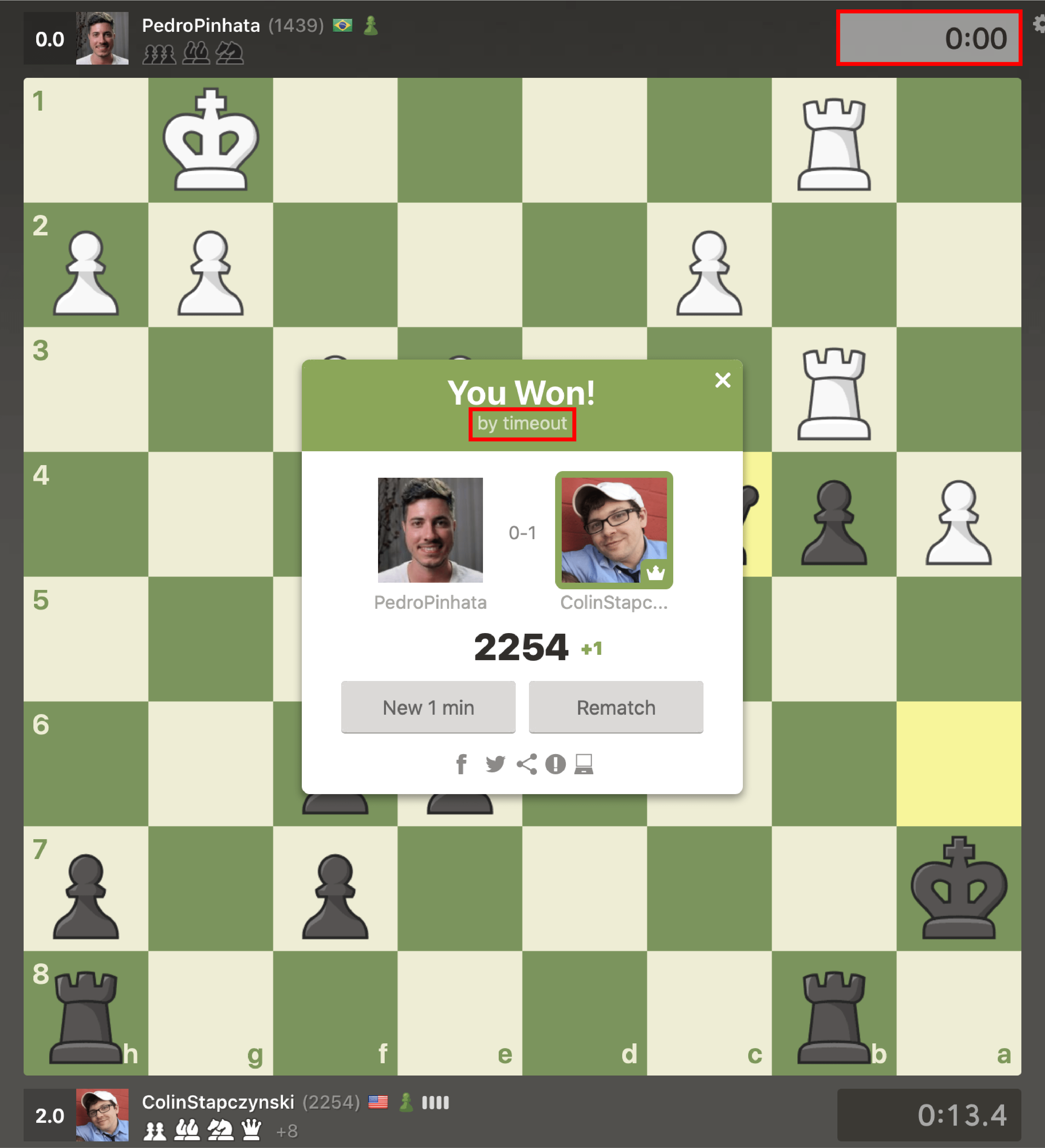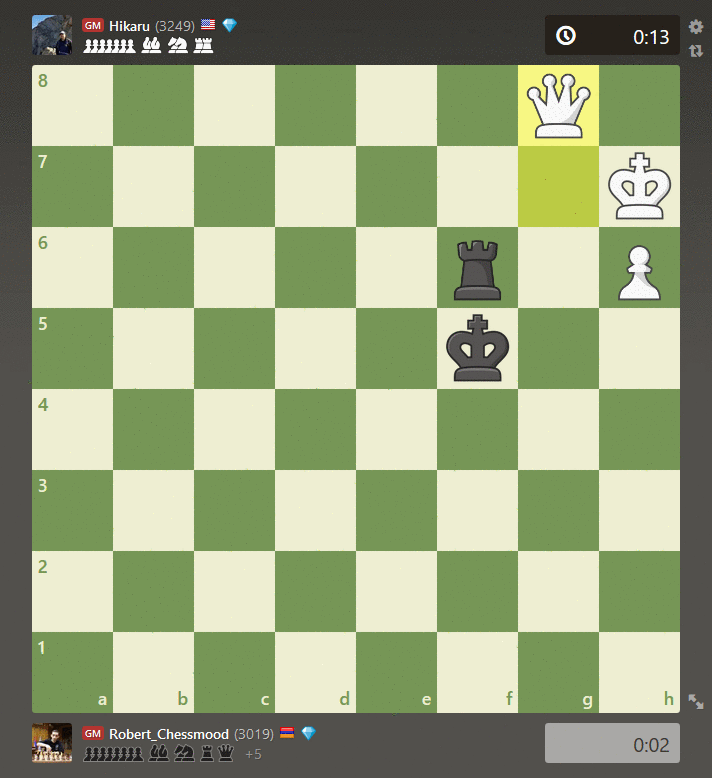
Flagging
The term "flagging" has become increasingly popular among chess players and streamers, but do you know what it means? Spoiler alert: it is not related to the tiny flag next to your username on Chess.com.
Here is everything you need to know about flagging:
What Is Flagging In Chess?
Flagging in chess refers to the act of winning (or drawing) a game on time. Flagging is more usual in blitz and bullet games since players often get in time trouble in faster time controls.

The term flagging is an allusion to analog chess clocks that have flags in their displays that fall whenever a player runs out of time.

Why Is Flagging Important?
With the popularization of online blitz and bullet chess, flagging is more critical than ever. If you like to play fast time controls, you must have excellent time management skills to avoid getting flagged when you are in a better position.
In the game below, we can see how WFM Alexandra Botez could win a bullet game against GM Eric Hansen by flagging him, even though she was down on material. Black's extra material was not enough to secure the win because he could not convert the game in the time he had left.

Flagging your opponent can also help you to draw a game when you are in a lost position. In the example below, you can see how GM Hikaru Nakamura, playing as Black, managed to flag GM Robert Hovhannisyan in a blitz game to get a draw by insufficient material.

As you can see, learning how to take advantage of the clock can be a powerful weapon when playing online. Learning how to flag your opponents and stopping them from doing it to you can certainly improve your results in fast chess games.
Conclusion
You now know what flagging is in chess and how you can use it to draw or win games. Try out our premium membership and watch this video by GM Daniel Naroditsky about playing better blitz and bullet chess by using the concept of flagging.







